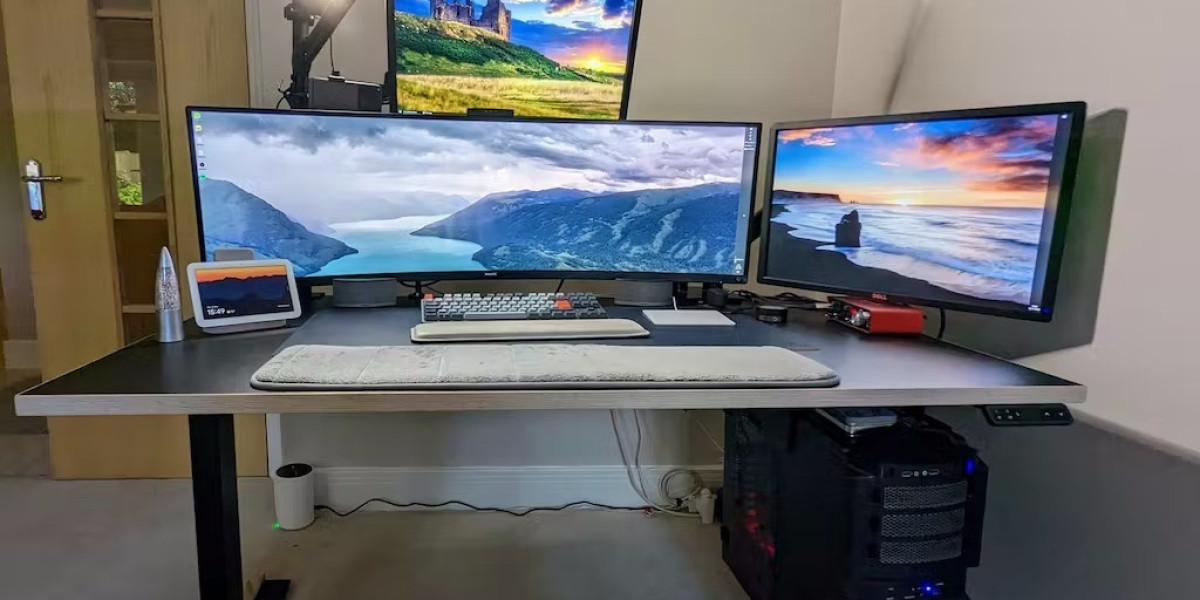In recent years, workplaces across the UK have been changing. People are no longer content to sit all day at their desks. Instead, there is a growing interest in furniture that supports health and productivity. One of the biggest trends is the rise of standing desks. But what exactly are these desks, and why are they becoming so popular? Let’s explore this exciting shift in modern workspaces.
Understanding Standing Desks
A standing desk is a type of desk designed to allow a person to work while standing up. Some desks are fixed at a certain height, while others are adjustable, letting the user switch between sitting and standing. These adjustable desks are often called height-adjustable desks or sit-stand desks. The main idea is simple: standing while working can reduce the amount of time spent sitting, which is linked to various health problems. Standing desks are used for tasks like typing on a computer, reading, writing, or even attending online meetings.
Health Benefits of Standing Desks
One of the main reasons standing desks have become popular is the health benefits they offer. Sitting for long hours is linked to poor posture, back pain, and even more serious issues like heart disease. By using a standing desk, people can move more during the day and reduce these risks. Standing while working also helps with energy levels. Many users report feeling more awake and focused when they alternate between sitting and standing. It can even help reduce feelings of fatigue, making it easier to stay productive throughout the day.
Improving Productivity and Focus
Standing desks are not only good for health; they can also improve productivity. When people stand, their blood flow increases, which can make the brain more alert. This extra alertness often translates to better concentration and faster decision-making. Some studies suggest that workers who use standing desks can complete tasks more efficiently and even experience better creativity. For those in busy offices or working from home, this can make a noticeable difference in daily performance.
Ergonomics and Comfort
A common concern about standing desks is comfort. Standing for long periods can be tiring if not done correctly. That’s why it’s important to pay attention to ergonomics. Adjustable desks allow users to find the right height for their body, whether they are sitting or standing. Using an anti-fatigue mat can also help reduce pressure on the legs and feet. Simple accessories like footrests or supportive shoes make standing work more comfortable. The goal is to create a workspace that encourages movement without causing strain.
Flexibility for Modern Workspaces
Standing desks are particularly valuable in modern workspaces that prioritize flexibility. Many offices in the UK now embrace open-plan designs, hot-desking, and collaborative spaces. Height-adjustable desks fit well in these environments because they allow each employee to customize their workspace. Even home offices can benefit from standing desks. For remote workers, a desk that allows sitting and standing makes a home office healthier and more functional.
A Stylish Choice for Offices
Beyond health and productivity, standing desks are also becoming a stylish choice for offices. Many modern designs include sleek finishes, minimalistic frames, and even built-in cable management. This makes them appealing to businesses that want a professional and modern look. The combination of style, practicality, and health benefits makes standing desks a popular choice for companies looking to improve employee satisfaction. A well-designed workspace can help boost morale and make the office a more enjoyable place to be.
How to Use Standing Desks Effectively
Simply having a standing desk is not enough; it’s important to use it correctly. Experts recommend starting slowly and alternating between sitting and standing throughout the day. For example, standing for 30 to 60 minutes every hour can help the body adjust without causing fatigue. It’s also essential to keep proper posture. The screen should be at eye level, and the keyboard should be at a height that keeps the wrists straight. Small adjustments can make a big difference in comfort and prevent strain.
Why Businesses Are Investing in Standing Desks
UK businesses are increasingly investing in standing desks for their teams. The benefits are clear: healthier employees, fewer sick days, improved focus, and a more attractive office environment. In competitive industries, offering a workspace that supports employee well-being can also help attract and retain talent. Standing desks reflect a company’s care for staff, boosting productivity and job satisfaction over time.
The Future of Workspaces in the UK
The trend of standing desks reflects a larger shift in the way we think about work. Offices are no longer just about desks and chairs; they are about creating environments that support health, comfort, and creativity. As more companies in the UK adopt flexible and modern designs, standing desks will likely become a standard part of the workplace. From corporate offices to home setups, standing desks provide a simple way to boost health and productivity, shaping the future of modern work.
Conclusion
Standing desks are more than just furniture—they represent a new way of thinking about work. By encouraging movement, supporting good posture, and enhancing focus, they are changing the way people work across the UK. Whether at home or in the office, a desk that lets you switch between sitting and standing boosts health and productivity, making it a smart and stylish choice for a modern workspace.








